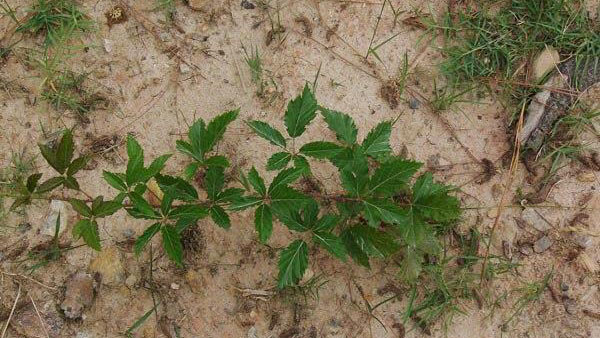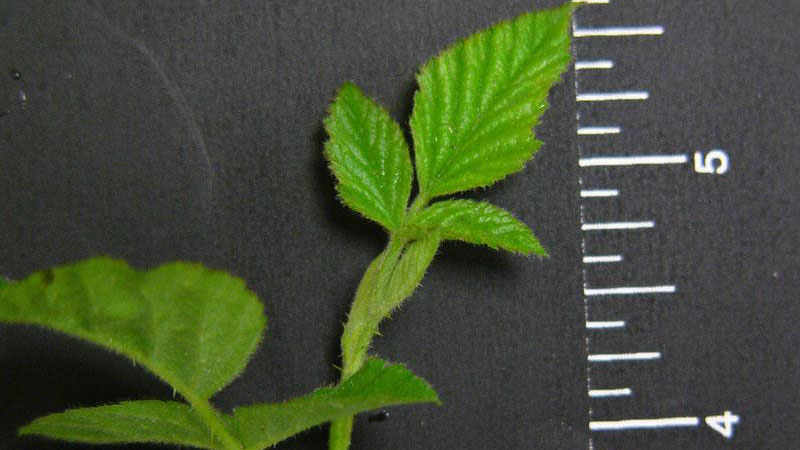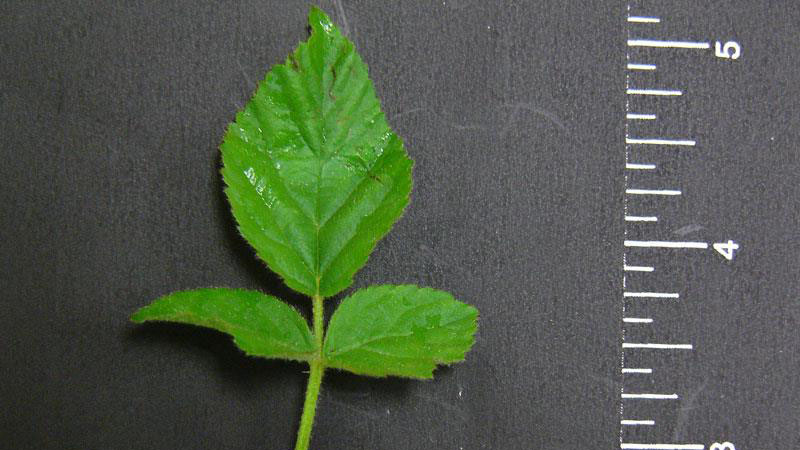Description
Blackberries (Rubus spp.) are perennial weeds that are often referred to as "brambles." They have an upright and vining growth habit that can completely take over waste areas when not controlled. Blackberries have prickles on the stems and leaves, and deep taproots that make chemical control difficult. Distinctive berries form in the late summer, turning from red to black in color as the season progresses.
Cultural Control
Perennial broadleaf turf weeds are capable of living more than two years. They thrive in weak, thin turf; golf fairways and roughs; home lawns; playfields; and industrial grounds. Proper turf maintenance is the key to control of this weed. First, select adapted turfgrass cultivars for your area and then properly fertilize, mow, and water to encourage dense growth.
Species Data
- GROWTH SEASON / LIFE CYCLE
- perennial weed
- GROWTH HABIT
- upright; vining
- LEAFLET NUMBER
- three
- LEAF MARGIN
- serrated/toothed
- LEAF HAIRS
- leaf hairs are present, along with distinctive thorns on the leaves and stems
- LEAF / LEAFLET SHAPE
- LEAF WIDTH
- 1 - 2 inches
- LEAF VENATION
- pinnate
- LEAF ARRANGEMENT
- alternate
- ROOT TYPE
- taproot
- FLOWER COLOR
- white
Publication date: Nov. 16, 2017
Recommendations for the use of agricultural chemicals are included in this publication as a convenience to the reader. The use of brand names and any mention or listing of commercial products or services in this publication does not imply endorsement by NC State University or N.C. A&T State University nor discrimination against similar products or services not mentioned. Individuals who use agricultural chemicals are responsible for ensuring that the intended use complies with current regulations and conforms to the product label. Be sure to obtain current information about usage regulations and examine a current product label before applying any chemical. For assistance, contact your local N.C. Cooperative Extension county center.
N.C. Cooperative Extension prohibits discrimination and harassment regardless of age, color, disability, family and marital status, gender identity, national origin, political beliefs, race, religion, sex (including pregnancy), sexual orientation and veteran status.






